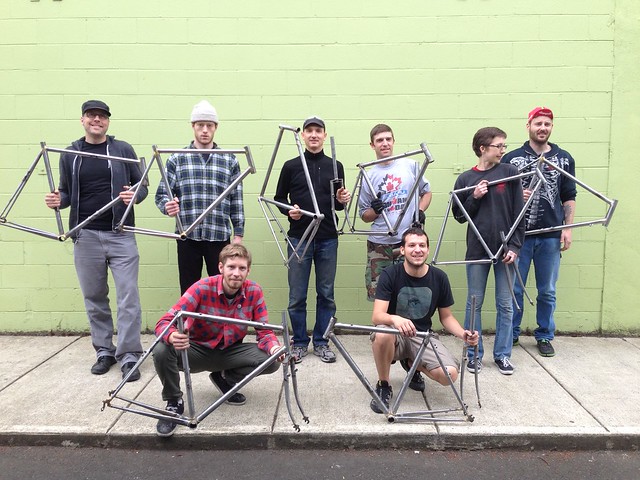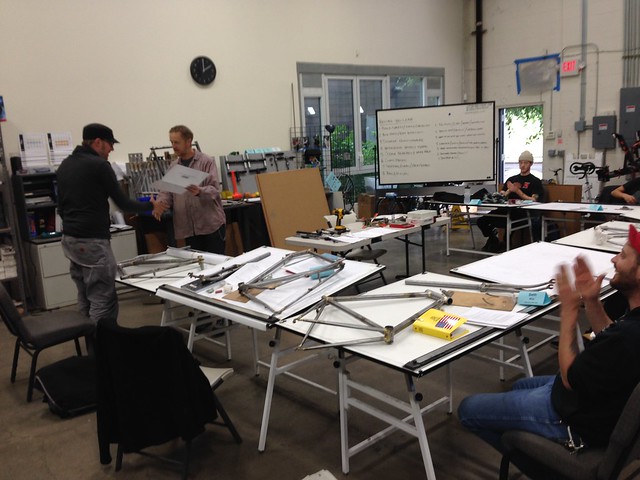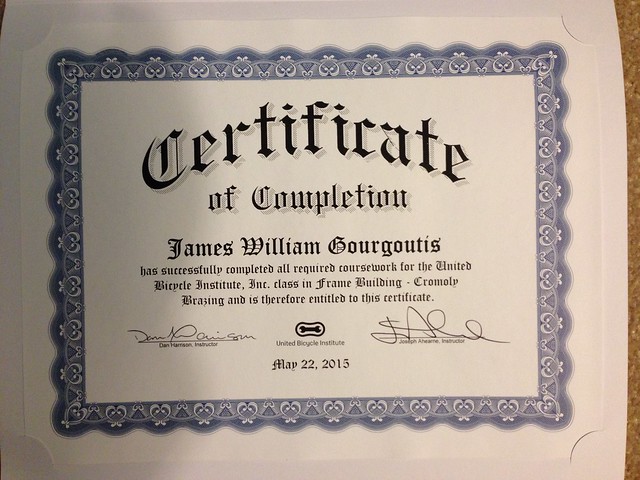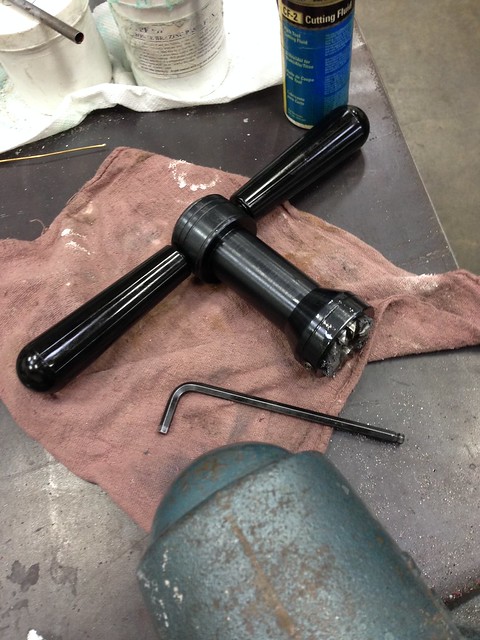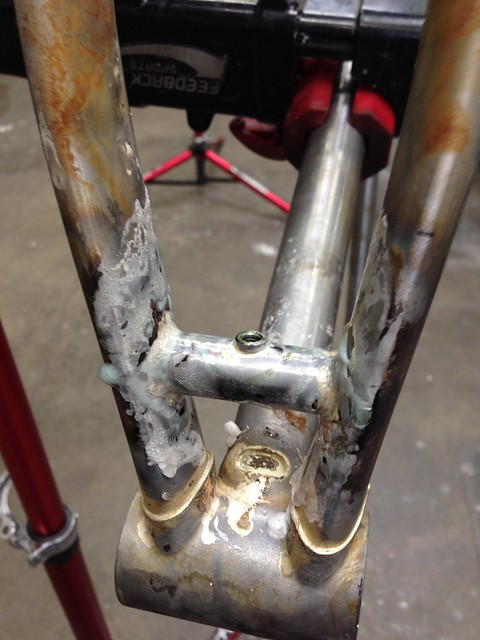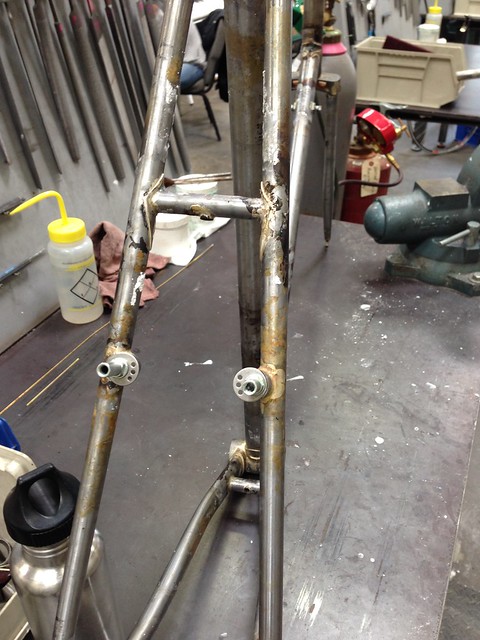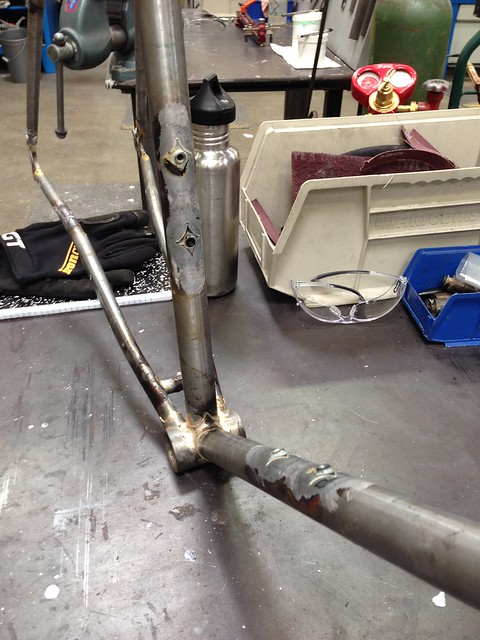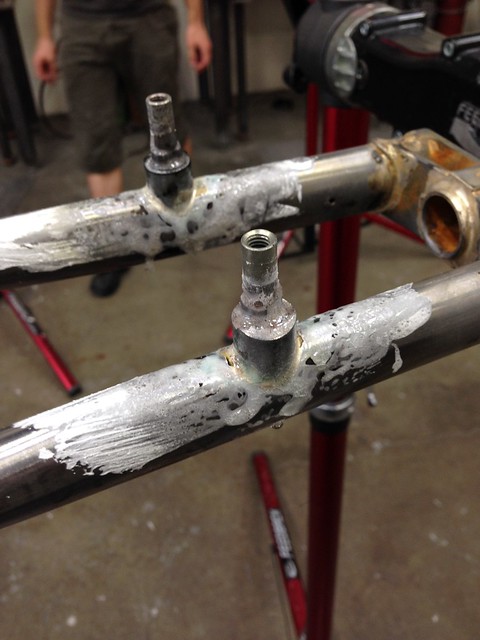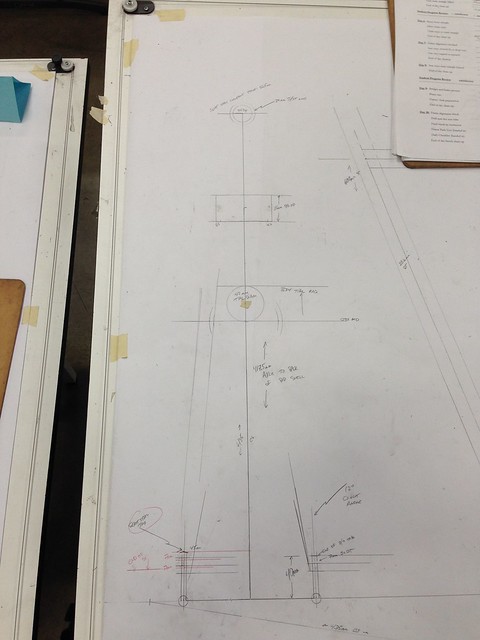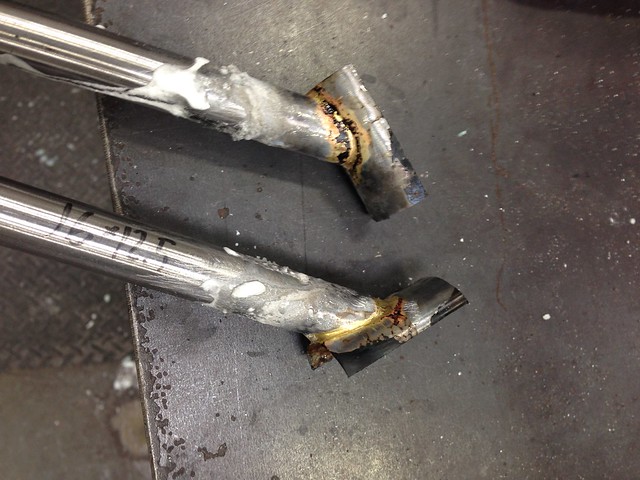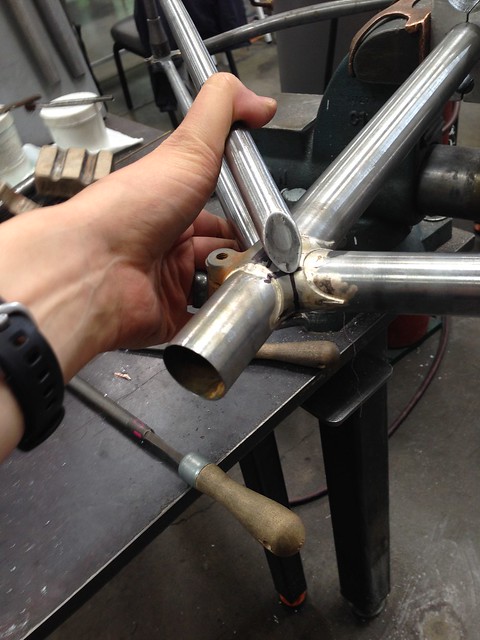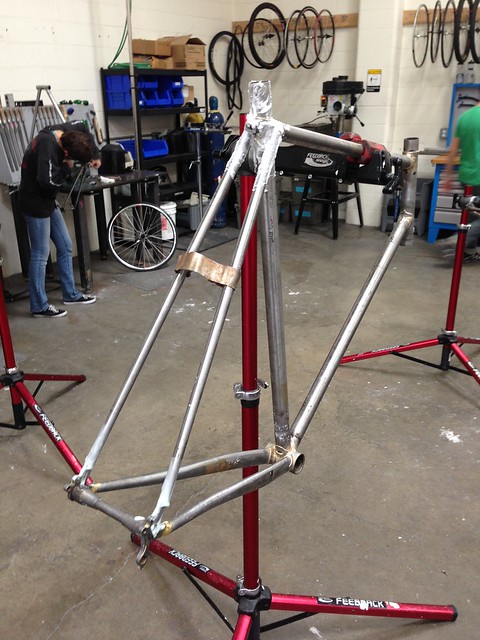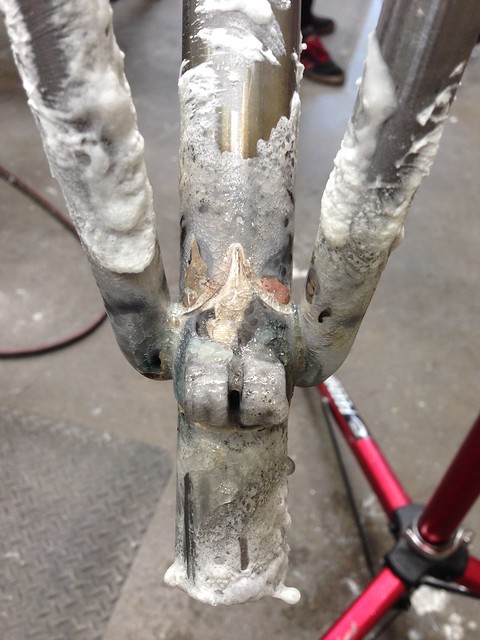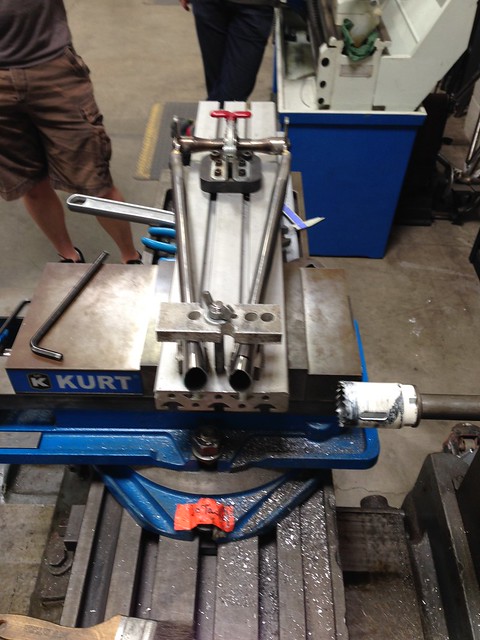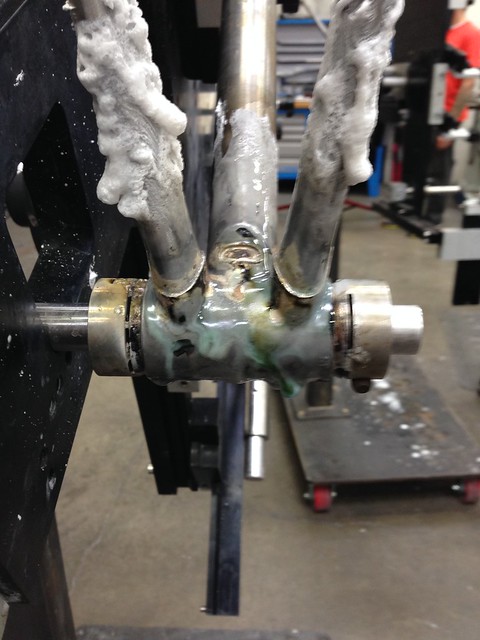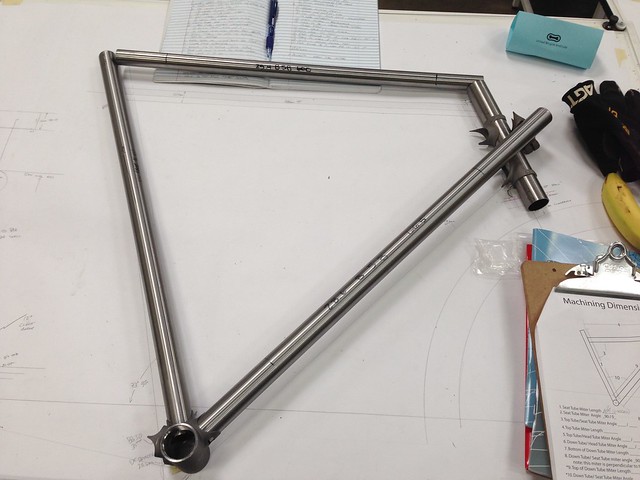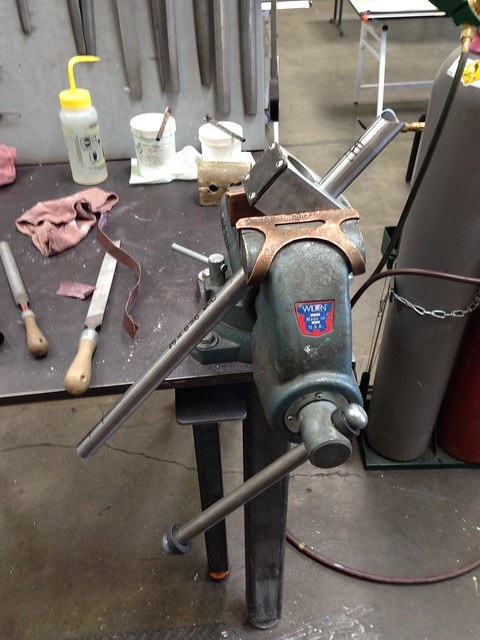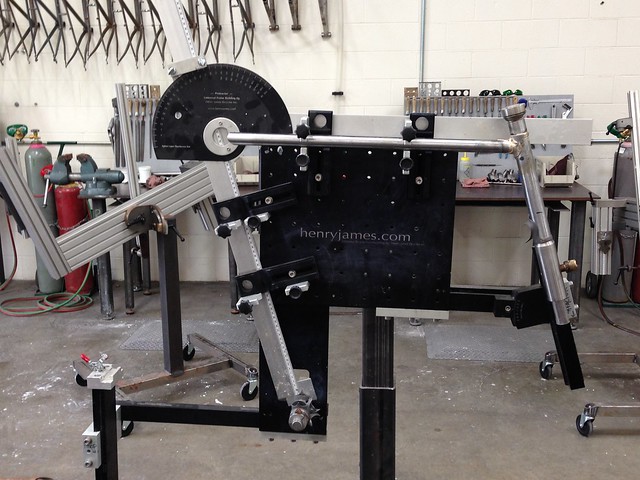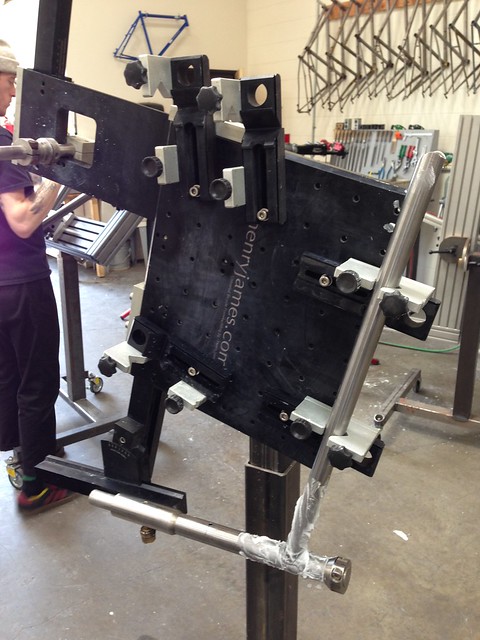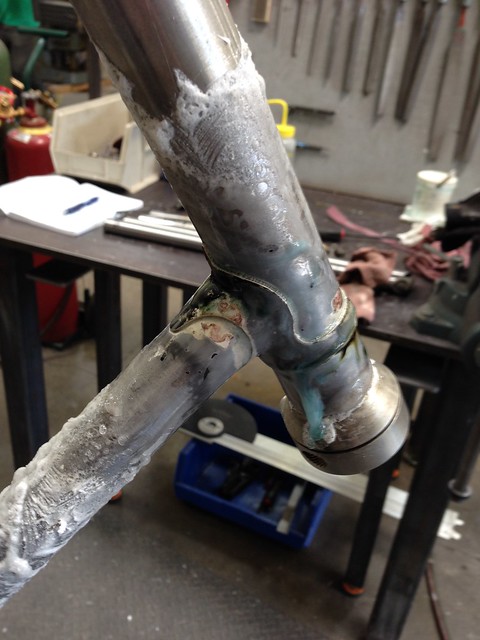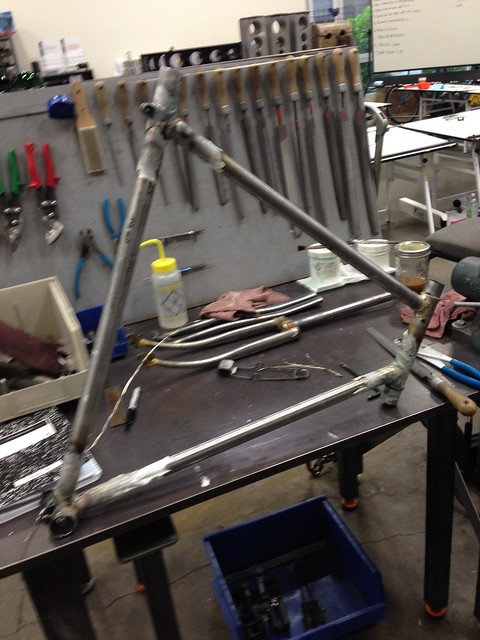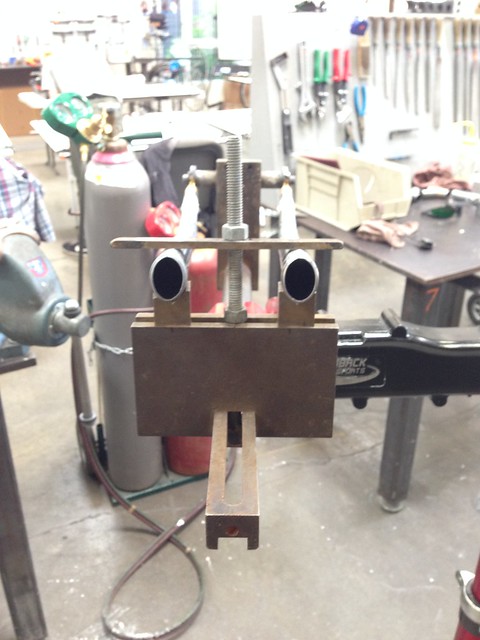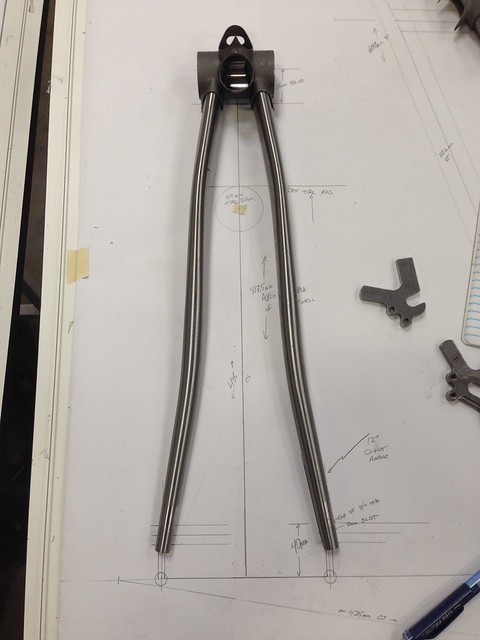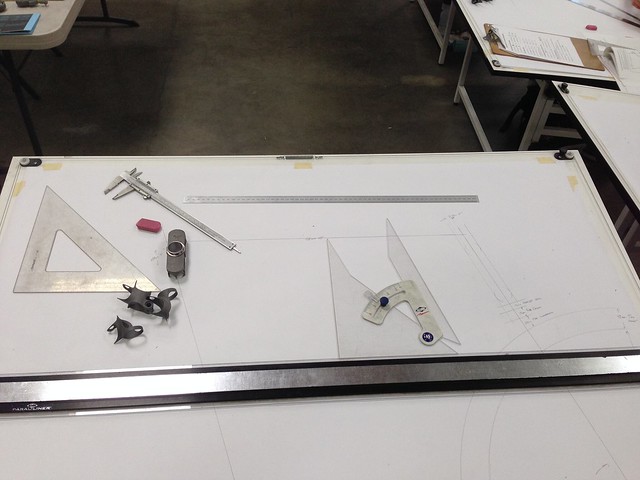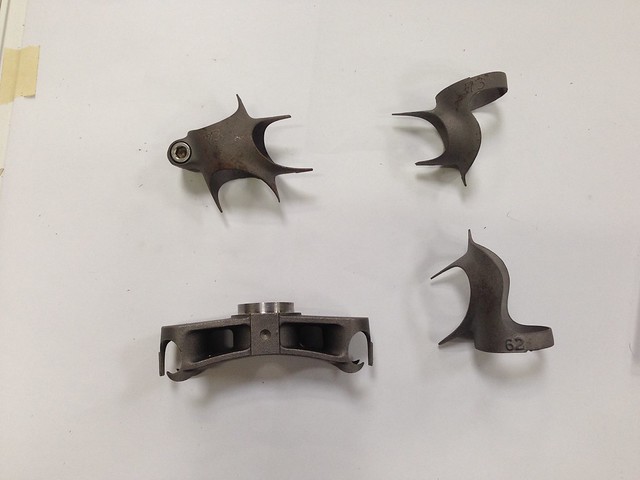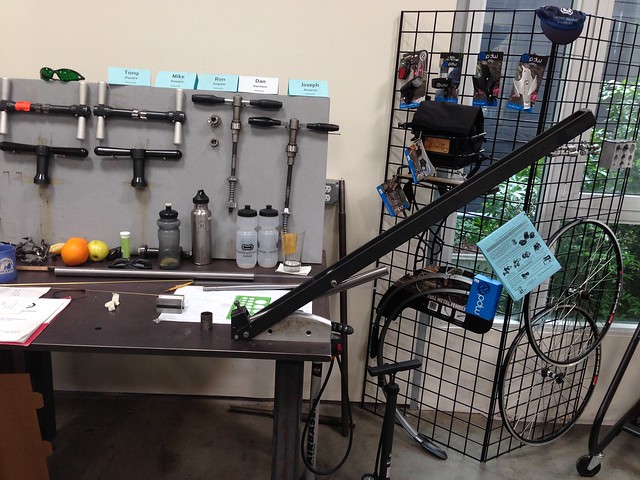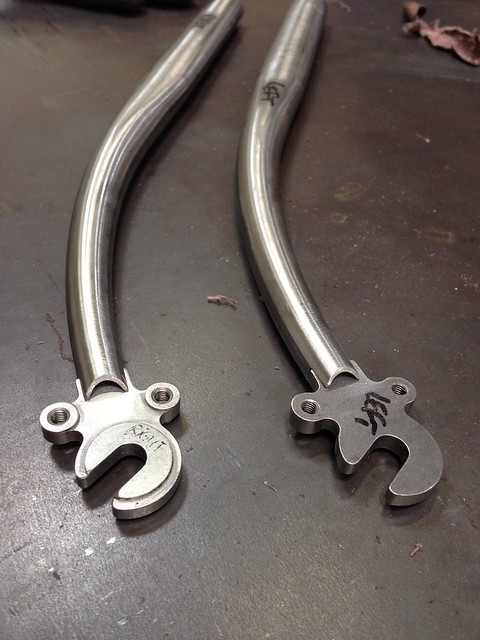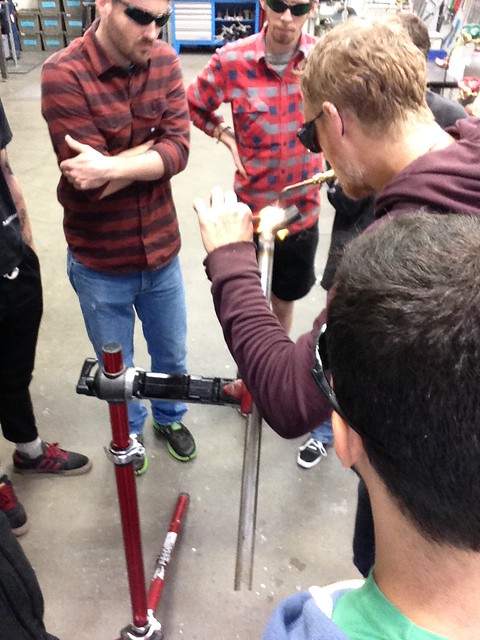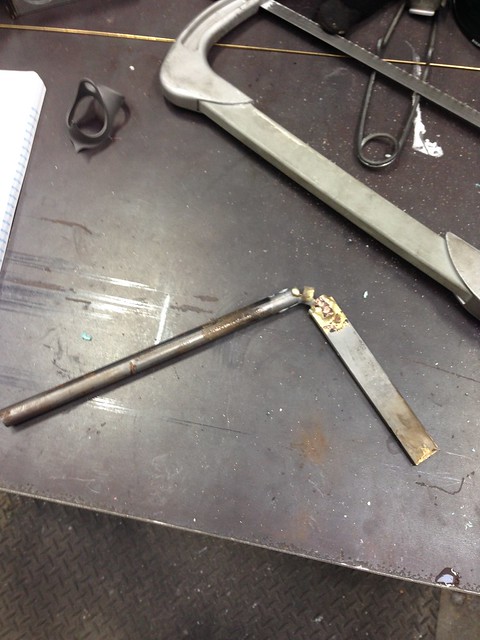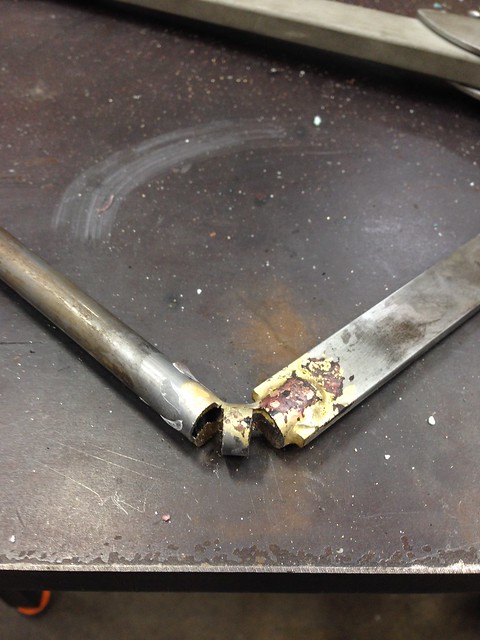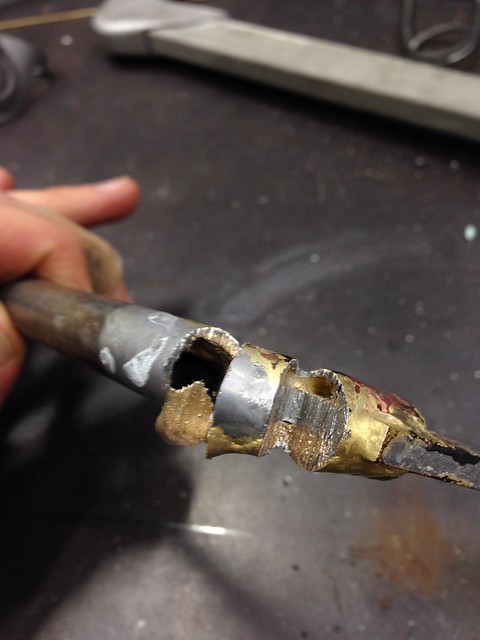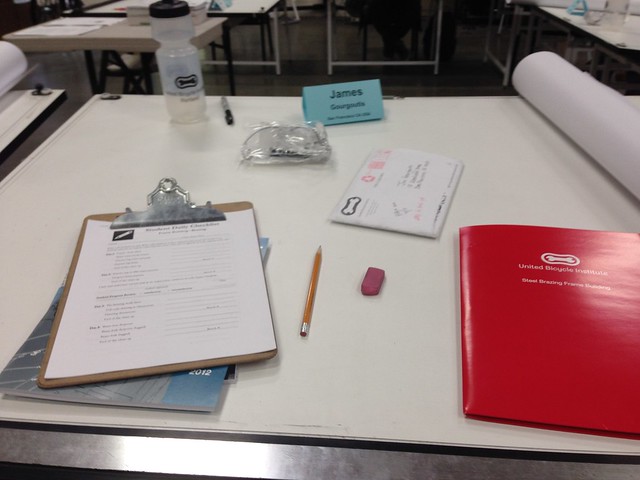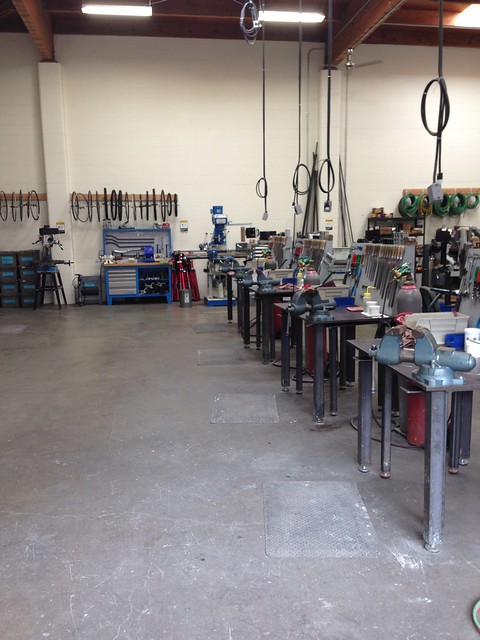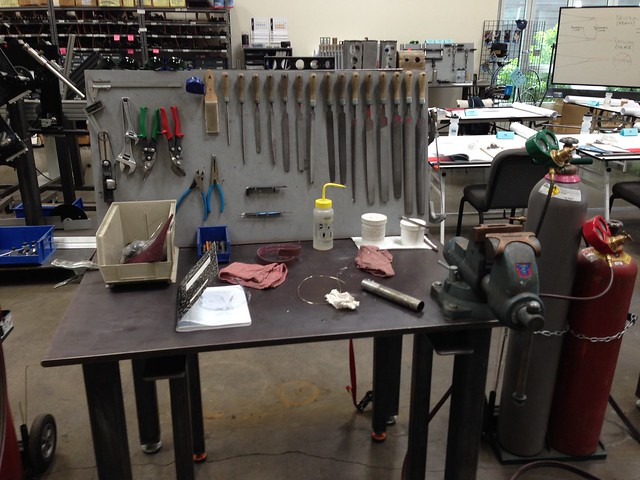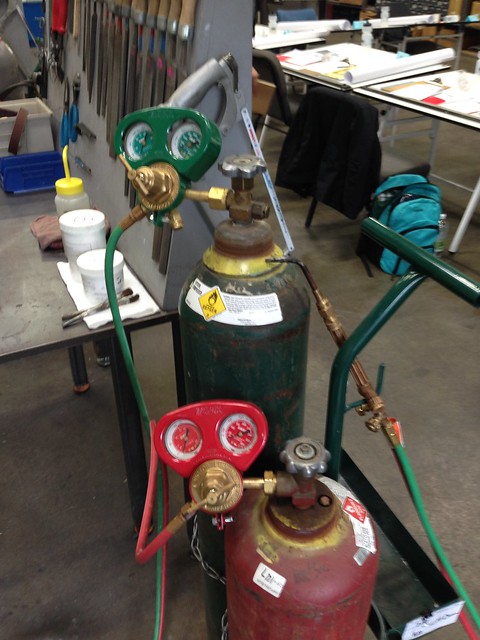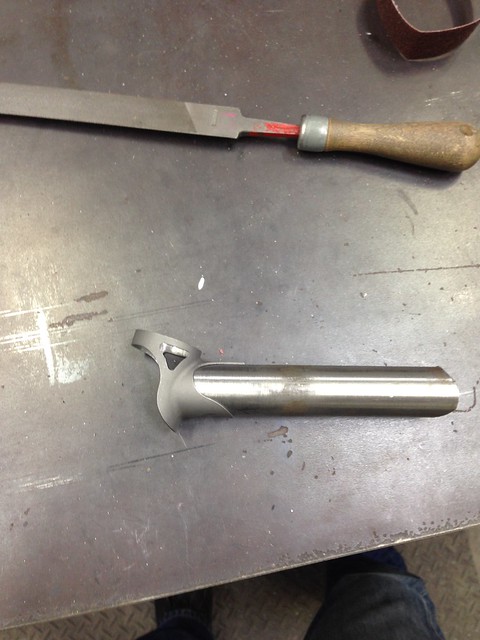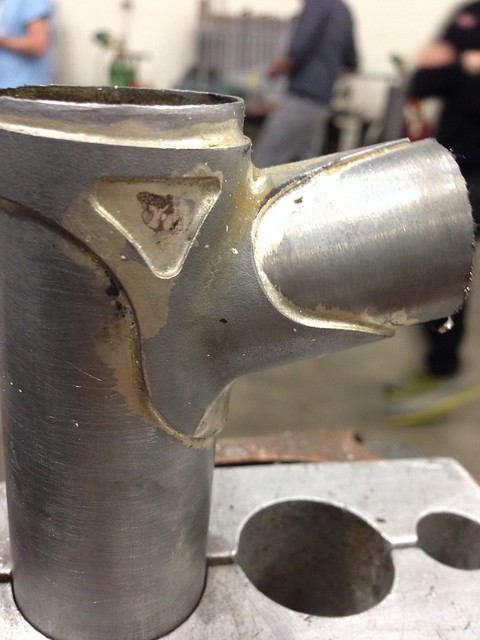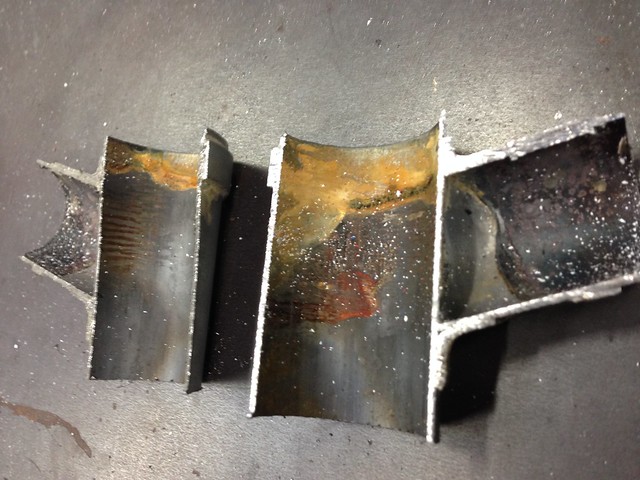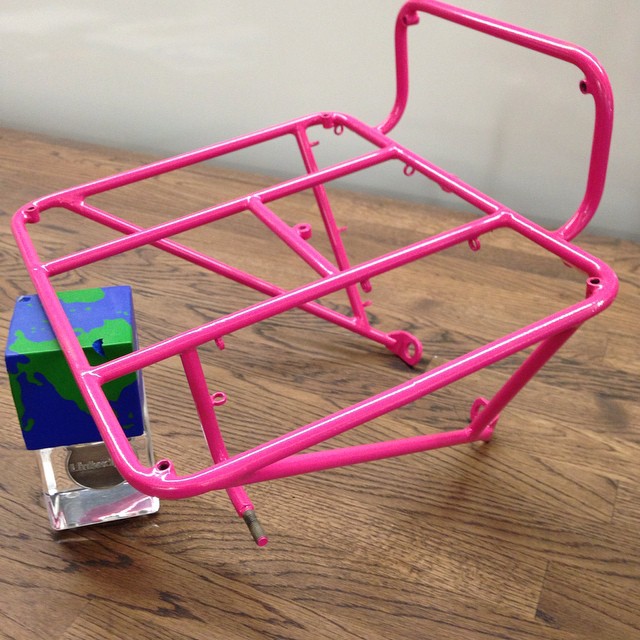IF you've been following along on my
Flickr stream, you'd know that earlier this year I did some surgery on my
Box Dog Bikes Pelican -- I reconfigured and tuned the decaleur, and shortened the backstop on the front rack.
The big change here is the addition of a front brake cable hanger. Previously I'd used a separate hanger, but I was having problems getting the headset tight enough due to having too many things to keep aligned at once. I also did some lo-fi facing to the decaleur itself.
I shortened the rack's backstop by about an inch...just to make it easier to mount/remove the front bag.
And here's everything reassembled. In the process the bike also got a different stem. I'd originally installed a Nitto Technomic Deluxe, which ended up being too long in the quill, causing the stem's wedge to interfere with the butted portion of the steerer tube. Getting the quill bolt tight enough was a challenge. As I was reorganizing my parts horde, I discovered that I had an old Belleri 1000 stem that had the right extension length and clamp diameter, with a normal-length quill, so I swapped that out.
I
finally was able to get out for a short ride this past weekend (I rode to Fairfax for coffee and a bit of lunch). The bike worked fine, without any problems. The headset stayed tight (although the real test will be some off-road riding), and the additional tightness of the V-O roller-bearing headset seemed to cancel any shimmy the bike exhibited before.
